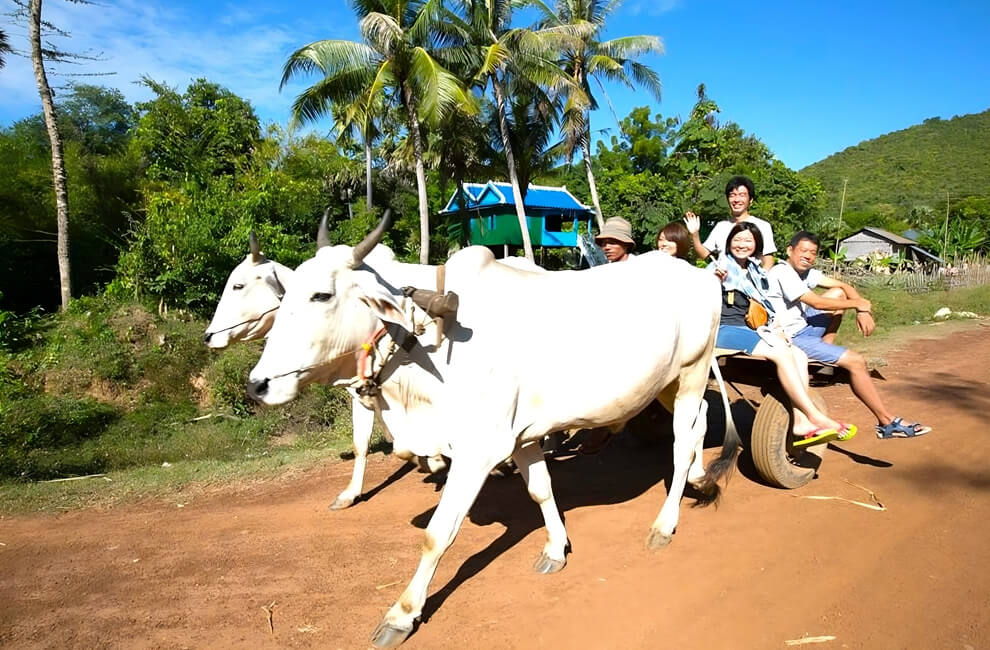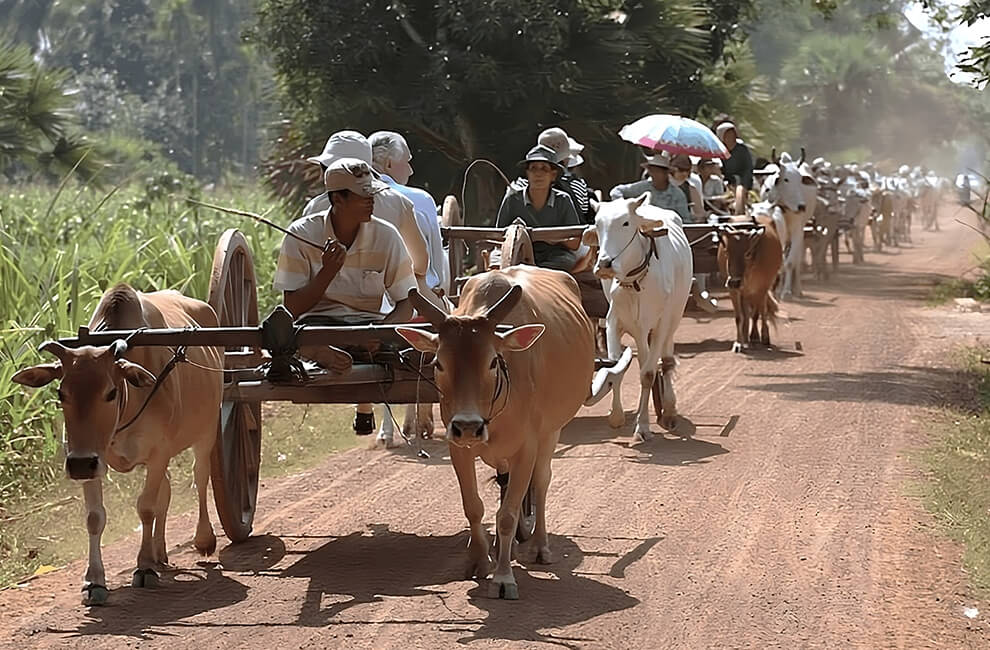In the vibrant and rich history of Cambodia, one mode of transportation stands out above the rest – the ox cart. This traditional method of travel has played a significant role in shaping the culture and lifestyle of the Cambodian people. Let’s delve into the fascinating world of the oxcart and explore why it was the most popular form of transportation in Cambodia’s past.
Why was the Ox Cart so Popular in Cambodia?
The ox cart was not just a means of transportation in Cambodia; it was a way of life. The slow and steady pace of the oxen pulling the cart allowed travelers to enjoy the scenic beauty of the countryside and connect with nature in a way that other modes of transport could not provide. The rhythmic sound of the wooden wheels on the dusty roads became a familiar and comforting sound for those who traveled by ox carts. It was a peaceful and meditative experience, unlike the noisy and hectic nature of modern forms of transportation.
Transport Agricultural Produce
Ox carts have been utilized for centuries as a reliable method to transport agricultural produce from farms to village or markets. Their enduring popularity stems from their efficiency and cost-effectiveness in hauling heavy loads over various terrains. Farmers and traders appreciate the sturdiness and reliability of ox carts, which can navigate rough roads and narrow pathways unreachable by modern vehicles. This traditional mode of transportation continues to play a significant role in the agricultural economy, showcasing the resilience and practicality of simple yet effective methods in the transport of goods.
How did the Ox Cart Shape Cambodian Culture?
The ox cart was more than just a practical mode of transportation; it was a symbol of cultural identity. In Cambodia’s past, the ox cart was used for various purposes, such as transporting goods to and from the market, attending religious ceremonies, and even as a form of socializing with neighbors.
The ox cart became an integral part of everyday life for the Cambodian people, and its presence was a common sight in villages and towns across the country. The craftsmanship of the ox carts was also a point of pride for Cambodian artisans, who would intricately design and decorate the carts with colorful patterns and symbols.

The Enduring Legacy of the Ox Carts
Despite the advancements in modern transportation, the oxcart still holds a special place in the hearts of the Cambodian people. While its use may have declined over the years, the ox cart remains an important symbol of Cambodia’s cultural heritage and tradition. Today, visitors to Cambodia can still experience the charm and nostalgia of riding in an ox cart, as some rural areas still use this traditional mode of transport for tourist excursions and cultural events.
Becomes a Popular Transportation for Tourists
The oxcart has emerged as a favored mode of transportation among tourists, gaining popularity for its traditional charm and unique travel experience. Its rustic appeal and authentic representation of local culture have captivated visitors seeking an adventurous and immersive journey.
As tourists seek to explore destinations in a more sustainable and traditional manner, the ox cart has become a symbol of eco-friendly and culturally enriching travel. Embracing this unique transportation method allows travelers to connect deeply with the history and heritage of a place, making their journey not only memorable but also meaningful.
Conclusion
In conclusion, the ox carts was more than just a means of transportation in Cambodia’s past; it was a cultural icon that shaped the way of life for generations of Cambodian people. Its slow and steady pace, along with its symbolic significance, made it a beloved and cherished form of travel. While modernization may have replaced the oxcart with faster and more efficient modes of transportation, its legacy continues to live on in the hearts and minds of the Cambodian people.
By writing this article, we have discussed why the oxcart was the most popular form of transportation in Cambodia’s past, how it shaped Cambodian culture, and why it remains an enduring symbol of the country’s heritage. Thank you for reading!





